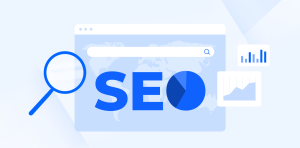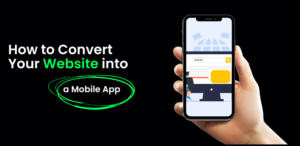What are the Benefits of Quantifying your Website

A website is a powerful asset because it shows potential customers that you are serious about your business. Additionally it allows you to showcase your products and services. However, it is also important to mention that there are over 1.5 billion websites on the internet and many of them are providing the same services and products as you. Therefore, in order to attract your target audience, you will need to do a lot more with your website so that you can gain a competitive advantage in your industry. Outside of having the right content, one strategy is to quantify your website. You can measure how your website is performing by using website traffic software. By quantifying your website, you gain access to information that is going to help you make improvements such as bounce rate, the amount of time visitors are spending on your page, conversion rates and click through rates. In this article, you are going to read about the main benefits of quantifying your website.
You Will Know the Bounce Rate
The bounce rate tells you how many people are leaving your website as soon as they enter it. When a potential customer arrives on a homepage, they will do a quick scan to see if they can find what they are looking for. If the content is disorganized, they can’t find what they are looking for, or they just don’t like the look of your website, they are going to click out and move on to the next. Your bounce rate will show you who:
- Clicked out through an external link on your web page.
- Hit the back button
- Typed in another website address
- Closed the browser
- Left it open without doing anything
Once you understand the reasons why visitors are leaving your website, you can make some changes to see if there is any improvement.
You Will Know How Long Visitors Spend on Your Page
If visitors are leaving your page shortly after landing, it means they are not staying long enough to engage with your content. Visitors who are interested in making a purchase are going to stick around and pay attention to what you’ve got to say. Let’s say you’ve got a 4 minute video on your website that you want visitors to watch. If they click out after the first 1-minute, you will know that the video isn’t performing well. Additionally, if potential customers are not spending any time on your product and services page, the pictures might not be enticing enough, or the content not engaging enough. Either way, once you’ve identified the problem, you can start working towards fixing it.
You Will Know Your Conversion Rate
There are several types of conversion rates, these include, lead to customer, visitor to lead, email conversion rates, landing page conversion rates etc. If you are running an ecommerce site conversion rates are going to be very important to you because your main aim is to get people to buy your products. If you are getting thousands of visitors per day but none of them are making a purchase, you need to find out why. Additionally, your conversion rates will tell you which advertising channels are most effective. If you’ve got ten adverts out, but you are only seeing a return on your investment from two, get rid of the others.
You Will Know Your Click Through Rate
One of the most important aspects of your website is the call to action (CTA). The aim here is to let your visitors know what steps they should take next. You might direct them to fill out a form, to download an eBook, to join your mailing list or to commit to a purchase. When you know how many people are responding or not responding to your call to action, you can make the necessary changes to make it more appealing. Research suggests that there is a specific formula to use when it comes to an effective CTA; if you find that your call to actions are not converting, here are a few tips to improve them:
- Clarity: Your CTA should begin with the action you want the reader to take. For example, use words like, “order,” “shop,” “buy,” “subscribe,” “download.”
- Emotion: When a person feels led to do something, there is a high chance they are going to do it. Therefore, give them an offer they can’t refuse, the excitement they feel will entice them to take the desired action.
- Unique Selling Point: There are thousands of companies selling the same products and services as you. Let your potential customers know what’s in it for them if they purchase from you.
- Fear of Missing Out (FOMO): This is a great strategy to motivate people to buy because no one wants to feel as if they have missed out on a great opportunity. You can do this by creating a sense of urgency through running a sale, or stating the number of products left available.
Final Thought
Now that you understand the benefits of quantifying your website, it’s time to get to work. There are several tools you can use to quantify your website, once you have access to this information, it’s important that you make the necessary changes so that you will know what works best for you. Additionally, quantifying your website is a continuous process, your customers will change over time and you will need to change your game plan every time they do.






